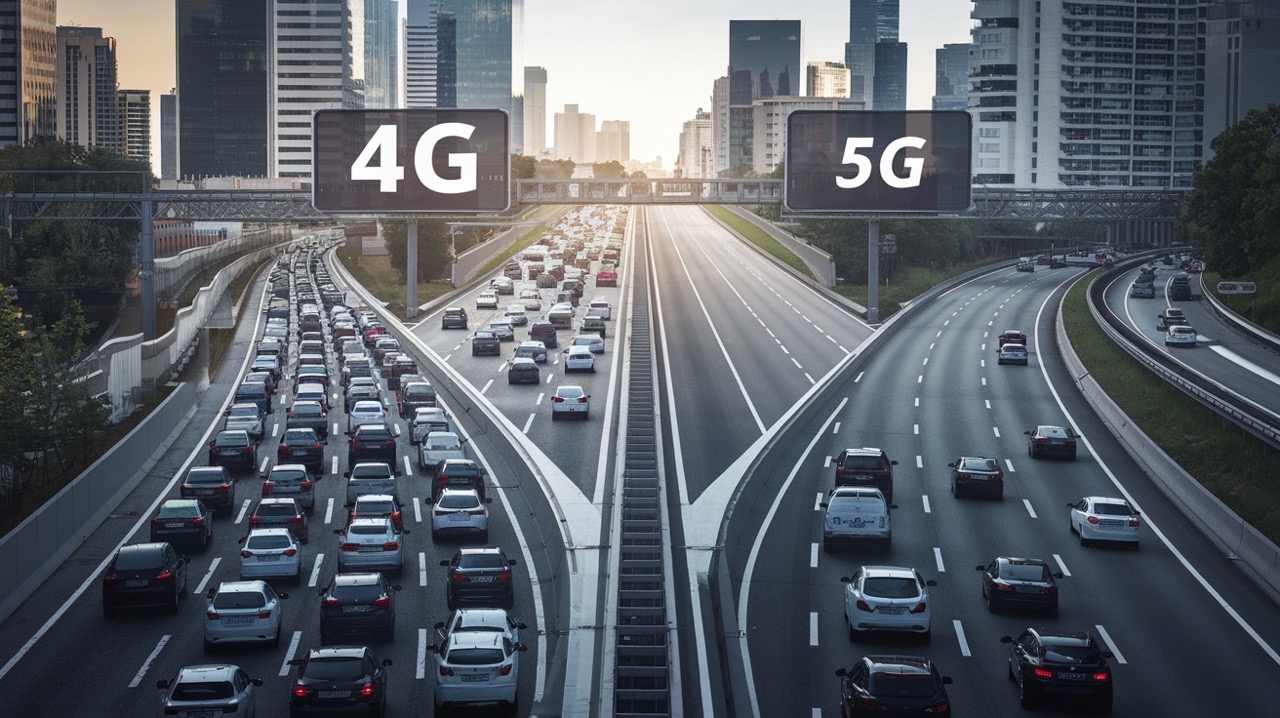
Touted as the next revolution in wireless communication, 5G promises lightning-fast speeds and refined connectivity. But why is 5G much faster than 4G? This article will look into the technological marvels that make 5G faster and also address factors that can influence your actual mobile network speed.
The core technologies driving 5G’s speed advantage
Several key technological advancements contribute to 5G’s superior mobile communication performance compared to 4G LTE technology:
-
Higher frequency bands
5G uses higher frequency bands, including millimeter wave (mmWave) frequencies that allow for much greater bandwidth. They trigger faster data transfer rate and higher data throughput. Think of them like upgrading from a small country road to a massive superhighway. -
Increased bandwidth
Bandwidth is the amount of data that can be transmitted over a network connection over particular time. 5G offers increased bandwidth compared to 4G, leading to significantly faster download speed and upload speed. -
Massive multiple input, multiple output (MIMO)
Massive MIMO entails using more antennas at both the transmitter (cell tower) and receiver (mobile device). As a result, it leads to a more efficient use of the available spectrum allocation and greatly improves network capacity. -
Beamforming
Beamforming stands as a signal processing method that focuses the wireless signal directly towards the user’s device rather than broadcasting it in different directions. It improves signal strength, slashes interference, and enhances network efficiency. -
Carrier aggregation
Carrier aggregation combines multiple frequency bands to create a wider channel. It delivers higher data transfer rate and improves network performance. -
Network slicing
Network slicing allows mobile operators to divide the mobile network architecture into multiple virtual networks, each tailored to specific applications and use cases. This improves network efficiency and triggers optimized performance for different services. -
New Radio (NR)
5G utilizes a new air interface called New Radio (NR) or 5G NR, which is more efficient and flexible than the radio access network (RAN) used in 4G. This new standard by the 3rd Generation Partnership Project (3GPP) offers more options to mobile operators that translate into an enhanced user experience.
The impact of technological wonders
The above-mentioned technological wonders enable 5G to carry a wide range of benefits to users, including:
- Faster loading times
Take advantage of faster loading times for web pages, apps, and videos. - Seamless streaming
Relish seamless streaming of high-resolution video content. - Responsive gaming processes
Experience responsive gaming with lower latency. - Enhanced user experience
5G provides a richer and more responsive connectivity experience for users. - Lower latency. Make the best of augmented reality (AR), virtual reality (VR), autonomous vehicles, and remote surgery, ensuring “ultra-reliable low latency communications (URLLC)”.
- Increased network density
Increase network density, supporting a greater number of connected devices for Internet of Things (IoT) and “massive machine-type communications (mMTCs)”.
Addressing the “Why is 5G so slow?” concerns: real-world factors
While 5G has the potential for incredible speeds, several factors can impact your actual experience:
- Network congestion
Even with advanced technology, network congestion can slow down your mobile network speed, especially during peak hours. - Distance from cell tower
Signal strength decreases with distance from the cell towers. Being further away will give a poor reception and slow mobile communication performance. - Obstructions and interference
Building materials, trees, and other obstructions can weaken the 5G signal, particularly the high-frequency mmWave signals. This interference will affect performance. - 5G deployment challenges
The rollout of 5G is an ongoing process, and 5G deployment challenges such as limited cell towers coverage can affect availability and speed. The older networks have had a “4G deployment” for quite a while now, meanwhile 5G is in its initial stages. - Device compatibility
Your mobile devices must support 5G to take advantage of the new technology. Older smartphones and tablets may only be compatible with 4G LTE network. Some hotspots are capable, however.
Comparison 5G vs. 4G
| Criteria | 5G | 4G LTE |
|---|---|---|
| Maximum throughput | 10 Gbps | 1 Gbps |
| Latency | 1 ms | 30–50 ms |
| Bandwidth | up to 400 MHz | 20 MHz |
| Applications | AR, VR, remote surgery | Streaming HD, gaming |
Can a mobile phone signal booster help with 5G?
While a mobile phone signal booster or “5G signal booster” won’t create a 5G connection where none exists, it can improve the signal strength and better reception of an existing signal. This is particularly helpful in areas with poor reception due to distance or interference. However, standard 4G signal boosters won’t work with 5G; you need a booster that supports the 5G frequency bands. There is also the mmWave signal booster to help improve it at the local access points.
The future of mobile connectivity: 5G and beyond
5G represents a significant leap forward in mobile communication technology. It’s a major step of mobile network evolution. As wireless infrastructure improves and 5G deployment expands, you’ll experience even greater speed, improved coverage, and lower latency. Understanding the factors that affect connectivity experience is also important for using these products effectively. Look forward to “next-generation wireless” innovations to improve wireless access and better reception.





















